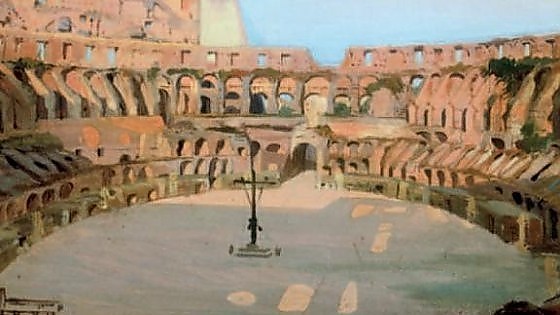
Archival image of the Coliseum
Via: @dariofrance on Twitter
Italian culture minister Dario Franceschini has seemingly endorsed a proposal by archeology scholar and professor Daniele Manacorda to rebuild the wooden and sand floor that once covered the central arena of Rome’s Coliseum, reports La Repubblica.
The minister sent a series of tweets on Sunday, saying that he very much liked Manacorda’s proposal but suggested that it would take “a little courage” to bring it to life. He also posted a photo (see above) of what the Coliseum’s interior looked like until just over a century ago.
Towards the end of the 19th century and increasingly in the early 20th century, the Coliseum’s labyrinth of passageways underneath the arena floor were excavated and left open to the elements.
That also made the arena unusable for events and altered the viewer experience, eliminating visitors’ ability to envision the perspective of the gladiators who fought in the arena. A small portion of the floor has since been reinstalled.
Proposed reinstallation of the Coliseum Floor
Via: @dariofrance on Twitter
It’s unclear what, if any, actual impact Franceschini’s endorsement will have for the structure in the short term. The Coliseum is currently undergoing a $25 million restoration, courtesy of the luxury brand Tods. It is one of several major monuments in the Italian capital getting a fresh face paid for by the country’s fashion industry (see “Luxury Brands Fund Restoration of Italy’s Monuments”).
The rationale behind Franceschini’s attraction to the plan is less opaque, however. The Culture Minister has recently been strongly supportive of methods by which to further leverage the country’s cultural heritage to aid in replenishing it’s rather meager coffers.
A newly-floored Coliseum could be a solid tourism driver—not that the site has trouble drawing crowds as is—and the possibility to use the structure once again for events and even concerts and gladiatorial reenactments could be particularly attractive to the tourism board.